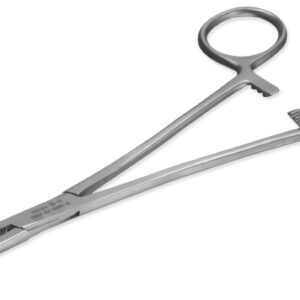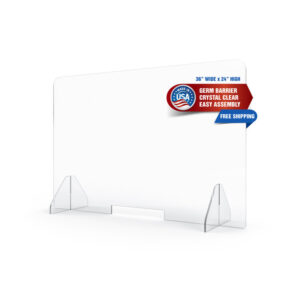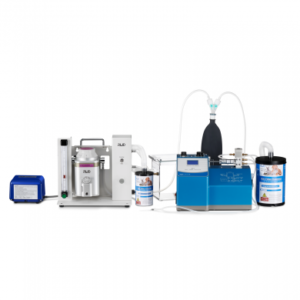Healthcare Prediction Modeling
Methods of Prediction: Main Concepts Predictions in clinical research are fundamental techniques that can benefit patients’ outcomes and medical practices. Prediction research is the process

Of the many procedures that patients go through during general check-ups, medical exams, and hospital consults, a considerable few are hard to pronounce, and for some doctors-in-training and beginner practitioners in the field, even harder to perform. Ophthalmoscopy, the examination of the patient’s retina and other structures at the back of the eye, is certainly one of these complex procedures. But, as with any challenging task, arming oneself with the right tool is the ultimate key.
Ophthalmoscopy, also called fundoscopy or the fundoscopic examination is a routine physical assessment of the structures at the back of the eye, collectively called the fundus. A quick and painless procedure, ophthalmoscopy makes use of a simple enough technique wherein the doctor shines a beam of light into the patient’s eye, effectively getting a close look at the arteries, veins, and a piece of the central nervous system of the patient. Ophthalmoscopes come in different types and variants, but all are simple instruments that have a primary source of light and various filters and lenses.
In its inception, the process of ophthalmoscopy began as the solution to a simple question–why did the pupil of the eye sometimes appear black, and sometimes appear light? It has been almost 170 years since Hermann von Helmholtz’s invention of what he then called the Augenspiegel or “eye mirror” in the year 1851, and what he came up with then would become the blueprint for today’s modern direct ophthalmoscope. Its working concept was simple enough–the observer’s line of vision must be on the same axis as the direction of the illumination, pointed towards the eye of the subject. According to Helmholtz, there were only three essential elements in his construction of the ophthalmoscope, namely, a source of illumination, a method of reflecting the light into the eye, and an optical means of correcting an unsharp image of the fundus. Since then, the direct ophthalmoscope as a doctor’s tool has evolved to a great extent, especially due to the transition from candlelight or gas lamp to an incandescent lamps, providing an easier means of producing illumination
Though simple in principle, the traditional direct ophthalmoscope may seem a very complex gadget to the uninformed observer. As stated earlier in Helmholtz’s invention, ophthalmoscopes have three primary components–a source of illumination, a means of reflection, and a means of refining the produced image. The head of modern direct ophthalmoscopes consists of the light source, viewing aperture, and different lenses and filters. The device is turned on or off with a rotating knob usually found on the handle that also serves to adjust the intensity of the light beam. This is so that the light beam can be adjusted to provide the lowest illumination necessary to lessen pain or discomfort in the patient. Also, modern direct ophthalmoscopes carry batteries in their handles, but some designs may also be rechargeable.
At the front of the device is a rotating dial used to adjust between various available filters for size, shape, and color, each serving a different purpose. The size of the light beam can be adjusted to large, medium, and small depending on the level of pupil dilation. The small light is used when the pupil is constricted, which is usually the case if the patient is in a well-lit environment. The medium-light is most commonly used for the non-dilated pupil in a dark environment, and the large light is used if mydriatic eye drops were used to dilate the patient’s pupil chemically. With the filter dial, the shape of the light beam can also be adjusted to half-light for cases where the pupil is partially blocked by a lens with cataracts; slit light, to examine contour abnormalities of the eye; and grid light, to observe relative distances of the structures or retinal lesions. The filter dial also includes color filters such as red-free light (which usually appears as green) used to improve contrast by making the retina look black and white; and blue light, which can be used to observe corneal abrasions and ulcers after staining the eye with fluorescein.
Meanwhile, the focusing dials at the side of the head are used to select the strength of the lens by rotating clockwise for plus lenses and counterclockwise for minus lenses. The purpose of the lens bank is to bring the different structures into focus during the examination, as well as to compensate for refractive errors in both the patient and observer.
Though simple in principle, the traditional direct ophthalmoscope may seem a very complex gadget to the uninformed observer. As stated earlier in Helmholtz’s invention, ophthalmoscopes have three primary components–a source of illumination, a means of reflection, and a means of refining the produced image. The head of modern direct ophthalmoscopes consists of the light source, viewing aperture, and different lenses and filters. The device is turned on or off with a rotating knob usually found on the handle that also serves to adjust the intensity of the light beam. This is so that the light beam can be adjusted to provide the lowest illumination necessary to lessen pain or discomfort in the patient. Also, modern direct ophthalmoscopes carry batteries in their handles, but some designs may also be rechargeable.
At the front of the device is a rotating dial used to adjust between various available filters for size, shape, and color, each serving a different purpose. The size of the light beam can be adjusted to large, medium, and small depending on the level of pupil dilation. The small light is used when the pupil is constricted, which is usually the case if the patient is in a well-lit environment. The medium-light is most commonly used for the non-dilated pupil in a dark environment, and the large light is used if mydriatic eye drops were used to dilate the patient’s pupil chemically. With the filter dial, the shape of the light beam can also be adjusted to half light for cases where the pupil is partially blocked by a lens with cataracts; slit light, to examine contour abnormalities of the eye; and grid light, to observe relative distances of the structures or retinal lesions. The filter dial also includes color filters such as red-free light (which usually appears as green) used to improve contrast by making the retina look black and white; and blue light, which can be used to observe corneal abrasions and ulcers after staining the eye with fluorescein.
Meanwhile, the focusing dials at the side of the head are used to select the strength of the lens by rotating clockwise for plus lenses and counterclockwise for minus lenses. The purpose of the lens bank is to bring the different structures into focus during the examination, as well as to compensate for refractive errors in both the patient and observer.
Using a well-designed tool such as the traditional direct ophthalmoscope would require certain techniques for proper use. Firstly, the examiner must prepare the right environment where the examination shall take place, usually in a dimly-lit room. The patient must be comfortably seated, with enough room for the examiner to walk around him or her. Depending on the need, the doctor can also decide to administer mydriatic eye drops for pupil dilation. In preparation for the procedure, it is recommended that both patient and doctor remove they eyeglasses unless the patient is highly astigmatic, or the doctor is highly nearsighted. Depending on the eye to be examined, the instrument must be held with the hand belonging to the same side as the examining eye–the patient’s left fundus must be examined with the left eye and the right fundus with the right eye. Ask the patient to focus on a single point about a meter’s distance ahead.
The first step in the fundoscopic procedure is to look for the patient’s red reflex, the reddish-orange reflection of light by the patient’s eye. At the distance of arm’s length, the doctor uses the ophthalmoscope to illuminate the patient’s eye and look for the R/R through the viewing aperture. Once this has been achieved, the lens is adjusted to +10 diopters and standing from the patient’s side; the examiner moves towards the patient while following the R/R through the viewing aperture until he is 1-2 inches from the patient’s eye. Next, the examiner adjusts the lens dial from +10 to 0 diopters to effectively shift the focus from the front to the back of the patient’s eye, toward the retina and other structures
In selecting the best direct ophthalmoscope, the first thing to consider is product price. As a specialty instrument, ophthalmoscopes are sold at reasonably high prices in the market, but some brands offer lower prices than others, and in keeping within the confines of one’s budget, the price is an important factor. Buyers of ophthalmoscopes must also importantly consider the performance of different ophthalmoscope brands according to product reviews. How well does the product do its job? Finally, one must also look at the ophthalmoscope’s quality and durability based on what materials were used in its production. Higher quality products are sold at higher prices, and it is a smart buyer’s responsibility to check where economy and quality intersect.
ADC 5112NLS Diagnostix Pocket Ophthalmoscope Set
Welch Allyn Standard Ophthalmoscope
The Heine Mini 3000 Otoscope is the most popular choice of an otoscope for students in the field because of its friendly price. Equipped with Xenon Halogen bulbs for bright illumination, the Mini 3000 Otoscope is a reliable tool for use in hospitals and diagnostic clinics. The unique features of this product include reflect-free illumination, allowing for a clearer visualization of the tympanic membrane and auditory canal. It is also optimally designed for easy use and comfort, with the structurally incorporated swiveling viewing window. All in all, this flexible and high-performing instrument is the true compromise between quality and cost.
Welch Allyn Coaxial Ophthalmoscope
Methods of Prediction: Main Concepts Predictions in clinical research are fundamental techniques that can benefit patients’ outcomes and medical practices. Prediction research is the process

Introduction The modern lifestyle has made various health risks such as hypertension, heart disease, and other common cardiovascular conditions increasingly common. Picking the right sphygmomanometer

EKG Rulers Pulse and heart rate are terms that are often used interchangeably, but there is a notable difference between them–the heart rate can be

As an Amazon Associate Conductscience Inc earns revenue from qualifying purchases Introduction to Otoscopy Otoscopy, an integral part of every doctor’s routine physical examination,






DISCLAIMER: ConductScience and affiliate products are NOT designed for human consumption, testing, or clinical utilization. They are designed for pre-clinical utilization only. Customers purchasing apparatus for the purposes of scientific research or veterinary care affirm adherence to applicable regulatory bodies for the country in which their research or care is conducted.